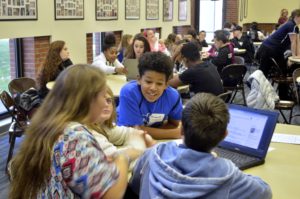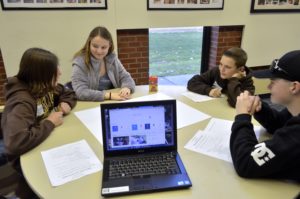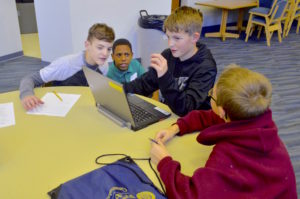Imaginary projects can help kids get a better sense of self
Ideas that emerge when teams of 8th graders are challenged to imagine and invent something the world needs are by turns fanciful, practical and everything in between.
But byproducts of the process are more the point. By bouncing their individual ideas around, coming to consensus and following through with a plan or prototype, students find clues to their own identities.
That’s what happened when our College & Career Knowledge program took about 90 middle school kids from Clairton City, Greensburg Salem, McKeesport Area and Steel Valley school districts to Pitt Greensburg in December.
The kids worked in teams to develop products or services they believe the world needs and afterward, took surveys designed to help them understand what the project taught them about themselves. The exercise helped some see their leadership potential. Others discovered artistic impulses, analytical capabilities, or other characteristics that it’s important to know before choosing a career, or even a college major.
After working with a team that dreamed up a device for turning turn water into food to end world hunger, Jonathan, a middle school student in McKeesport Area School District, said, “I guess I learned that care about something,“ explaining that the project helped him realize people can work together to change things. “I used to just think that whatever happens, happens.”
Working on the same team, his classmate Austin said he realized “I took the lead as soon as we started.” It gave him inkling that he’s a take-charge type who can get teammates enthused and get them collaborating, he said.
Using the Holland Career Codes, which is designed to help people connect personal interests and attributes to careers, the kids each identified the two most dominant characteristics they brought to their projects. For Austin, who aspires to a career in science, the top two were being realistic and investigative, followed closely by being enterprising.
As for other projects, the kids’ let their imaginations roam. Just to name a few, they came up with portable wi-fi devices, shelters for animals affected by natural disasters and temperature-controlled shoes.














